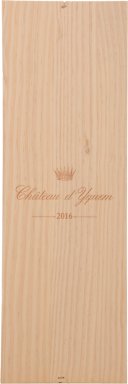Chateau Trotanoy
CHATEAU LE TERTRE ROTEBOEUF Grand cru
Beginning with his first vintage at Tertre Roteboeuf in 1978, François Mitjavile didnt need long to grow his (staunchly!) unclassified estate into one of the most respected names in St Emilion. Part winemaker, part philosopher, Mitjavile is one of the great characters of Bordeaux. He could be considered almost Burgundian in his approach - the opulence and grandeur are for his wines, not his front gate, the cellars are not gilded halls and statues. Mitjavile generally picks late, uses 100% new oak, and produces no second wine. Truly one of the personalities of the region.
Louis Roederer Cristal
Louis Roederer Cristal Champagne is the epitome of class and elegance from the house of Roederer. A super limited and hard to find top echelon Champagne, Cristal is a 55% Pinot Noir and 45% Chardonnay blend that was harvested in near perfect conditions. The resulting wine is a blend of vineyards from the finest vineyards of Montagne de Reims, the Vallée de la Marne and the Côte des Blancs. <p><strong>Please note: limit of 2 bottles per customer</strong></p>
Château Tertre Roteboeuf Saint-Émilion
Château Tertre Roteboeuf may have a quirky sounding name that at first has no connection to grand wines of Saint-Émilion, yet the wines produced here of utmost elegance, purity and not surprising for Saint-Émilion, plushness. With the blend consisting of Merlot and Cabernet Franc, Roteboeuf's wines are smooth, voluptuous and with tannins that are attractively loose-knit. The 1990 is a vintage for the ages and has proven to be one of the great cellaring vintages as well. Already 20 years in the bottle has not turned down the volume on this remarkable right bank Bordeaux.
Chapelle d'Ausone Grand cru
CHATEAU HAUT BRION 1er cru classe
Chateau Haut Brion is one of the five first Growths of the 1855 Classification of the Medoc. The Chateau was established in 1533 by Jean de Pontac, who was the first to plant vineyards on this prime gravelly site, found in the Graves sub-region of Pessac Leognan. The Chateau is owned today by Prince Robert of Luxembourg, the great grandson of Clarence Dillon. It is planted to Cabernet Sauvignon, Merlot, Cabernet Franc and Petit Verdot, with three hectares planted to the white varieties of Semillon and Sauvignon Blanc. Chateau Haut Brion is the only property outside of the Medoc in the 1855 classification. A wine of class and breed, Chateau Haut Brion is typically more approachable in its youth, showing floral perfume and elegance, yet possesses the structure required for exceptional longevity.
Domaine Michelot 1er cru
This wine is made from two parcels which are found on the border of the communes of Meursault and Puligny-Montrachet. The first, which is to the left of the Clos des Perrières, has clay/limestone soil and a subsoil of volcanic rock which allows a healthy root system to develop in this limestone-rich environment. The second is on the upper slope and overlooks the Perrières quarry. Here the soil is heavily limestone, partly as marl and partly as white rock. This is interesting for the way it brings mineral notes to the wine. During tastings it often find notes of white pepper and other spices both on the nose and on the palate.
Chateau d'Yquem 1er cru superieur
Incredibly opulent and rich, Château d'Yquem is widely considered the greatest sweet wine in the world. Currently owned by LVMH, this prestigious Sauternes estate is at the very top of the appellations classification, designated 1er Cru Classé Supérieur. Château dYquems 110 ha of vineyards are planted to 80% Sémillon and 20% Sauvignon Blanc. The Grand Vin is produced from only fully botrytised fruit, carefully hand-harvested over successive passes by a team of highly skilled pickers. Yields are tiny, with each vine producing just one glass of wine. Fermentation takes place in 100% new oak barriques followed by up to 36 months maturation in oak. A wine of exceptional intensity and complexity, the best vintages of Château d'Yquem are capable of aging gracefully for well over 50 years.
























